Lane Markings and Control Signs
- 1/28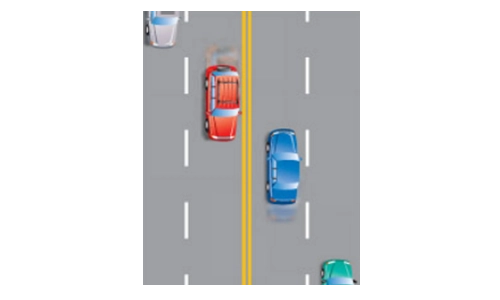
These pavement markings divide traffic moving in opposing directions on the roadway. They are crucial for guiding drivers and maintaining orderly flow, especially on two-way streets where no physical barrier exists between lanes.
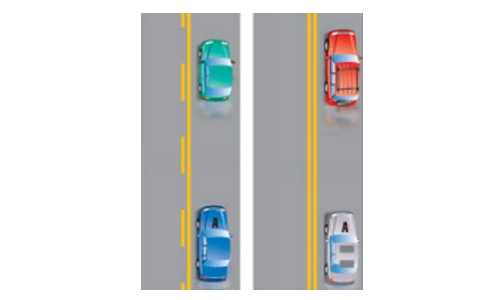
A solid line on your left means you must not cross the lane as it could be dangerous. This marking indicates a no passing zone or an area where lane changes are prohibited for safety.
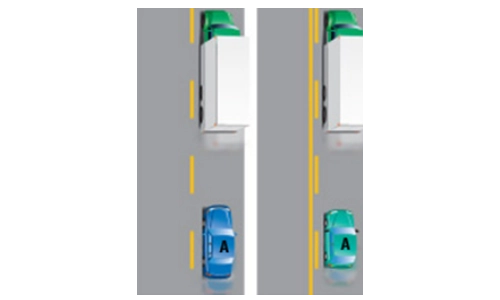
Broken lines indicate that the traffic is traveling in the same direction and if the way is clear, you may pass. This marking allows for passing or lane changes when conditions permit.
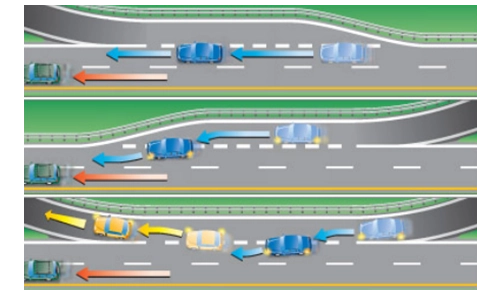
Continuity lines on your left side indicate that your lane is ending or exiting. These lines warn drivers to prepare to merge or transition to another lane.
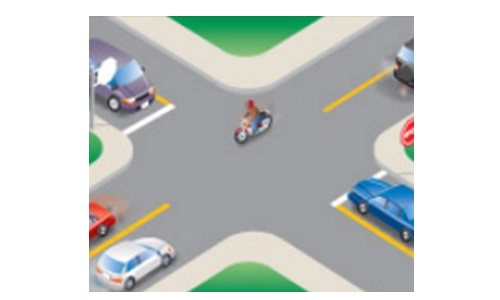
If there is no stop line at an intersection, you must stop at a crosswalk, whether marked or unmarked. If no crosswalk is present, stop at the edge of the sidewalk or intersection itself.
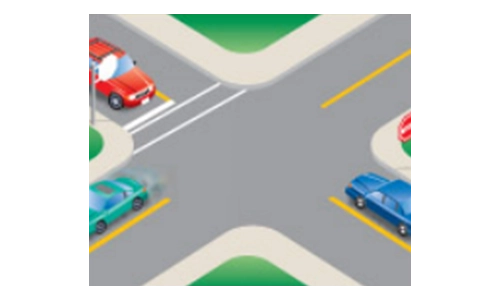
Two white parallel lines painted across the road indicate a crosswalk for pedestrians. You must yield to pedestrians crossing the road at this marked location.
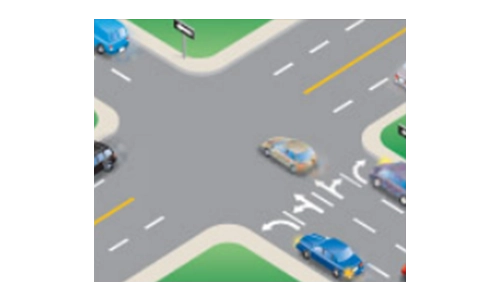
A white arrow painted on a lane indicates the permitted direction of travel for that specific lane. If the arrow points straight, left, or right, you must follow that direction only.
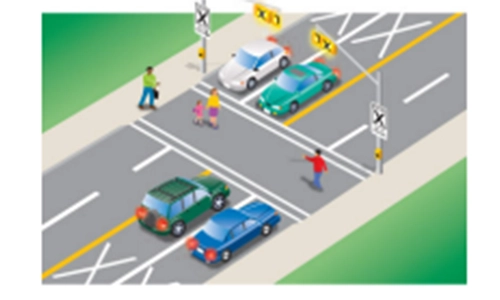
Pedestrian crossovers can be marked by two parallel white lines, overhead yellow lights, or two white double parallel lines with an X in each lane approaching it. All these indicate a designated crossing area.
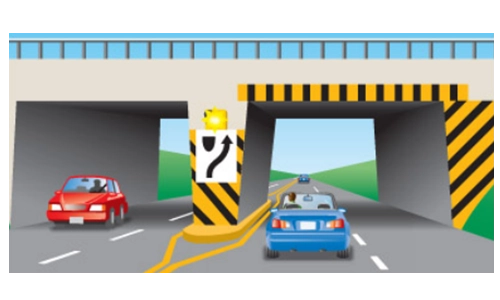
Two solid lines painted on the pavement guide the traffic away from fixed objects such as bridge piers or concrete islands. These lines help maintain a safe distance from obstacles.
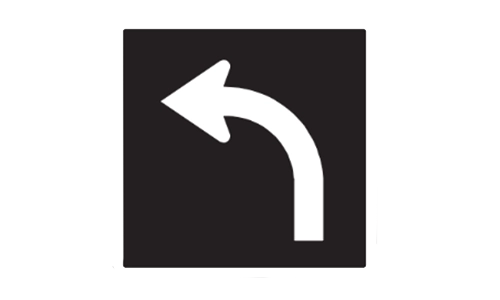
This sign, featuring a single curved left arrow, provides a mandatory instruction for vehicles in that specific lane. Drivers are obligated to turn left and cannot choose other directions.
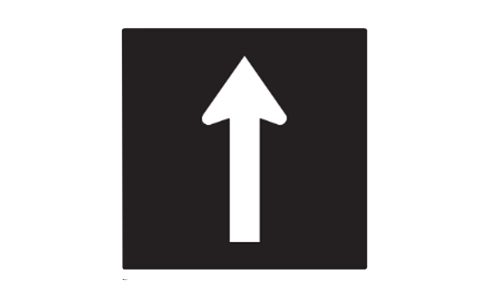
The straight arrow on this sign serves as a clear regulatory instruction, ensuring that all traffic in this designated lane proceeds only in a straight direction. Other movements are prohibited.
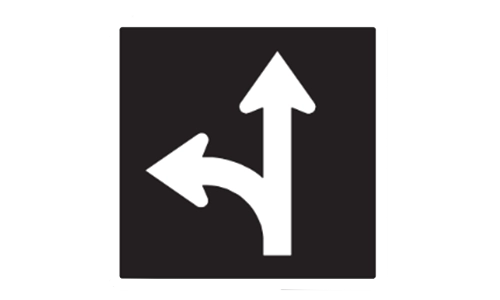
This sign displays two distinct arrows, a straight one and a curved left one, indicating that drivers in this lane have the option to either proceed straight through the intersection or execute a left turn. Drivers should choose their desired path in advance.
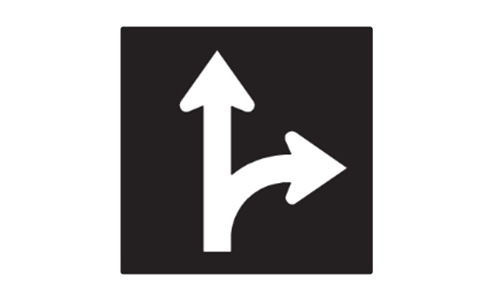
This sign features both a straight arrow and a curved right arrow, providing two legal options for traffic in this lane. Drivers should decide whether to continue straight or turn right before entering the intersection.
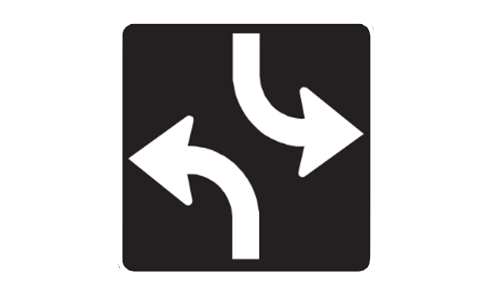
This specific sign, often found at intersections where opposing left turns are facilitated, distinctly implies that no through traffic is allowed. All vehicles must execute a left turn at this point.
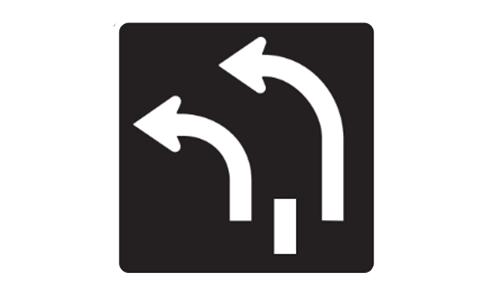
This sign explicitly shows two side-by-side curved left arrows, meaning that all vehicles in both designated lanes are required to turn left. Drivers should prepare for a shared turning movement.
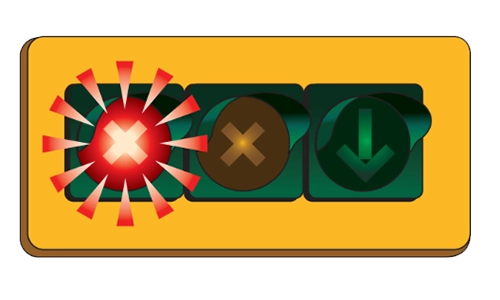
A solid red X displayed above a lane is a mandatory signal indicating that the lane is closed to traffic moving in your direction. Drivers must not enter or continue in a lane marked with a red X and should move to an open lane as soon as it is safe to do so.
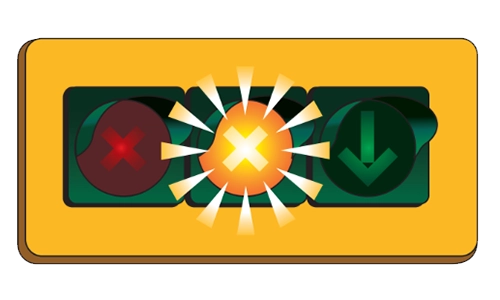
A flashing yellow X serves as a warning that the status of the lane is changing and you must vacate it. It signifies that the lane is about to be closed or reversed, and drivers should carefully and promptly merge into an adjacent lane that shows a green arrow.
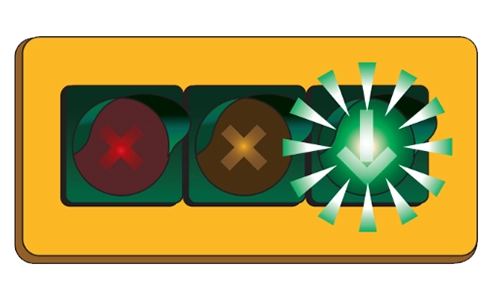
A solid green arrow pointing downwards above a lane indicates that the lane is open for normal traffic flow in your direction. Drivers can confidently proceed in this lane, assuming all other traffic laws and conditions allow.
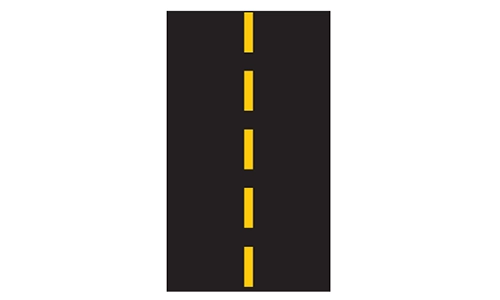
A broken line indicates that passing is permitted if the roadway is clear and conditions allow for a safe maneuver. Drivers must still exercise caution and ensure they have ample space to complete the pass before returning to their lane.
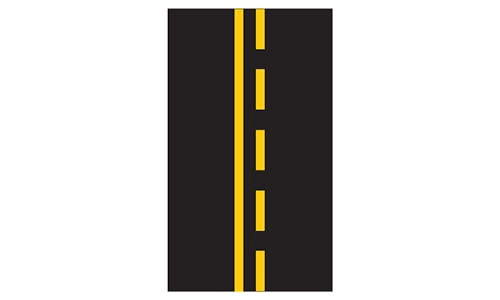
This marking creates a conditional passing zone. Vehicles on the side of the broken line may pass when it is safe, while vehicles on the side of the solid line are prohibited from passing.
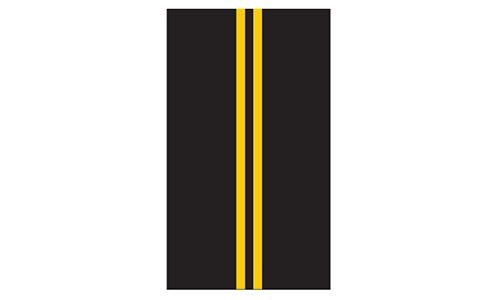
Double solid lines are a strict regulatory marking indicating that passing is prohibited for all vehicles in both directions. This is typically used in areas where it is unsafe to pass, such as near curves, hills, or intersections, requiring drivers to stay in their lane.

A single yellow line suggests that passing is generally permitted when it is safe to do so, but drivers should exercise heightened caution. This marking often appears in areas where visibility may be slightly limited.
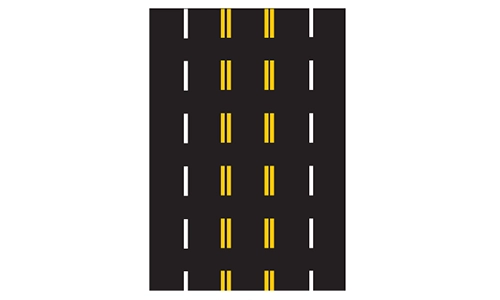
Double broken yellow lines indicate a reversible lane, meaning the direction of traffic flow can change. Drivers must always look for and obey an overhead lane control signal, like a green arrow or red X, to determine if they are permitted to use that lane at any given time.
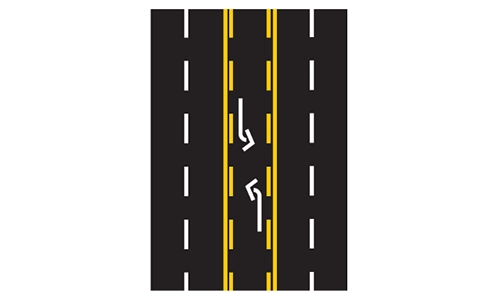
A two-way left-turn lane allows vehicles from opposing directions to safely enter the lane to make a left turn, reducing congestion in through lanes.

A solid line serves as a strict regulatory marking indicating that lane changes are prohibited. Drivers must stay within their current lane and are not permitted to cross a solid line.
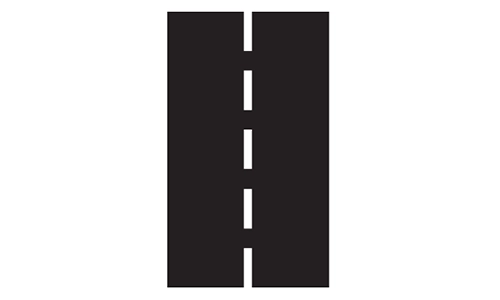
A broken line indicates that lane changes are allowed, provided it is safe and expedient to do so. Drivers should always check their mirrors, signal, and ensure there is ample space before moving into an adjacent lane marked with a broken line.
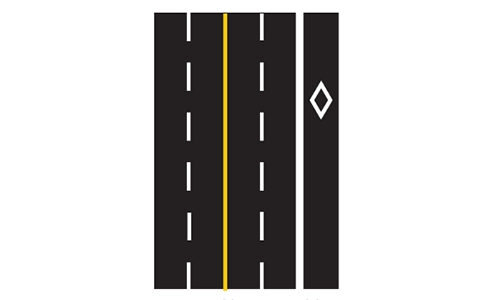
This pavement sign signifies that the lane is reserved for specific types of vehicles, such as buses, high occupancy vehicles, or bicycles. Drivers should look for accompanying signs that explicitly state which vehicles are permitted to use this lane.
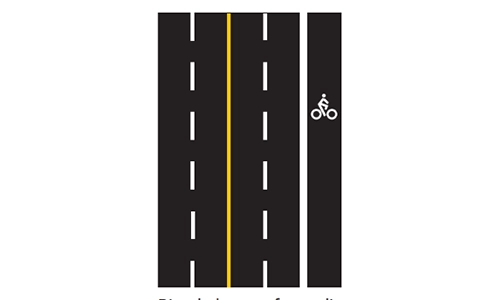
A bicycle symbol on the pavement designates a dedicated bicycle lane, meaning it is intended for the exclusive use of cyclists. Drivers of motor vehicles are generally prohibited from driving or parking in these lanes, ensuring a safe and clear path for cyclists.







